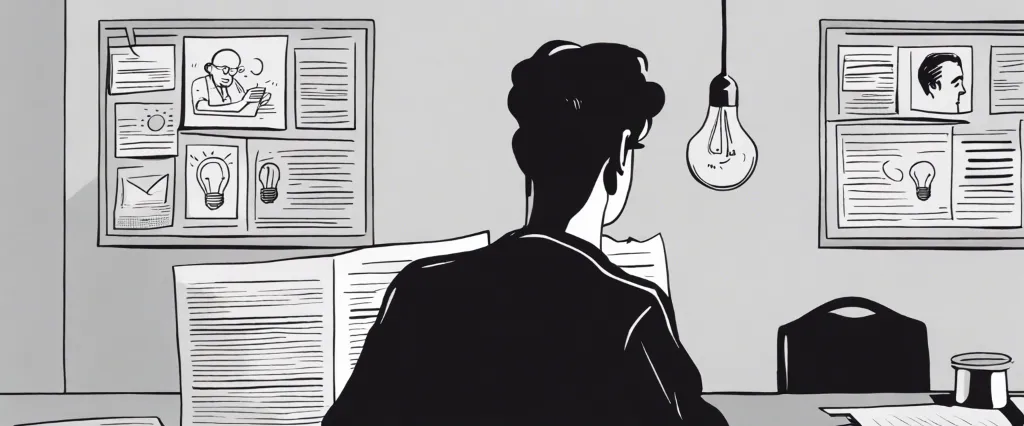
In the vast realm of literature, books have the remarkable ability to transport readers to different times, places, and cultures. They offer an immersive experience that allows us to explore new perspectives and gain a deeper understanding of the world we live in. Mark Kurlansky’s “Paper” and Peter Hessler’s “Country Driving” are two outstanding works that seamlessly capture the essence of their respective subjects – papermaking and China’s evolving landscape.
While seemingly unrelated, both books delve into the transformation of their chosen themes, shedding light on the intricate connections between history, culture, and socio-economic factors. Kurlansky’s Paper takes us on a captivating journey, revealing the surprising origins and profound impact of an everyday item we often take for granted. From ancient Egyptian papyrus to modern-day paper mills, Kurlansky uncovers the influential role of paper in shaping civilizations, religious movements, the spread of knowledge, and even political revolutions. Through rich historical accounts and engaging anecdotes, he presents a multi-faceted portrait of paper that challenges our preconceived notions about this seemingly mundane material.
On the other hand, Peter Hessler’s “Country Driving” provides a vivid portrayal of China’s rapid urbanization and its effect on both the social fabric and individual lives of its citizens. Hessler embarks on a remarkable odyssey through the Chinese countryside, exploring the transformative power of roads and the automobile industry, which forever altered the once secluded rural landscapes. As we follow Hessler’s encounters with a diverse cast of characters – from entrepreneurs and migrant workers to government officials and farmers – we gain invaluable insights into the profound changes China has undergone. Hessler masterfully incorporates personal narratives, historical context, and astute observations to offer a nuanced understanding of the complexities that arise from China’s modernization drive.
Despite their different subject matters, “Paper” and “Country Driving” share a common thread—the authors possess a unique talent for uncovering the hidden layers within seemingly mundane topics. Both Kurlansky and Hessler employ meticulous research and immersive storytelling techniques to transport readers into the worlds they explore. Through their lenses, we witness how material objects and societal advancements shape our lives and the narratives we build.
In this comparative study, we will examine the intriguing parallels and contrasts between these two enlightening works. By critically analyzing the authors’ approaches to their subjects, exploring the historical and cultural backgrounds they explore, and evaluating the implications of their findings, we aim to gain a deeper appreciation of the power of literature to illuminate forgotten or underappreciated aspects of our world. Through this lens, we will not only uncover the transformative nature of paper and China’s modernization but also unravel universal truths about human ingenuity and the complex interplay between tradition and progress.
Join us on this intellectual voyage as we venture into the realms of “Paper” by Mark Kurlansky and “Country Driving” by Peter Hessler. Together, we shall embark on a comparative exploration of these two extraordinary books, discovering the profound impact of seemingly ordinary subjects on history, culture, and human experiences.
Brief Summary of Two Books
Paper by Mark Kurlansky
“Paper: Paging through History” by Mark Kurlansky is a fascinating exploration of the history, cultural significance, and impact of paper throughout human civilization. The book takes readers on a journey from the earliest forms of paper in ancient Egypt and China to the modern printing revolution and digital age.
Kurlansky delves into the origins of papermaking and its gradual spread across different civilizations, highlighting how paper has shaped and influenced societies. He showcases the important role of paper in promoting the dissemination of knowledge, the development of bureaucracy, and the spread of religious and philosophical ideas.
The book also explores the economic and environmental repercussions of paper production, discussing the impact on forests, the rise of paper mills, and the subsequent industrialization of the paper industry. Kurlansky examines how paper has played a vital role in revolutions, wars, and the democratization of societies, making information accessible to the masses.
Furthermore, the author delves into the cultural and artistic aspects of paper, discussing the importance of paper in the creation of books, maps, currency, and art. Kurlansky offers insights into paper’s role as a medium for expression, including the development of writing styles, calligraphy, and printing techniques.
Throughout the book, Kurlansky weaves together historical anecdotes, personal accounts, and diverse perspectives to provide a comprehensive and engaging exploration of the significance of paper in human history. “Paper” elucidates the profound impact this humble material has had on human progress, communication, and self-expression.
Country Driving by Peter Hessler
“Country Driving” by Peter Hessler is a compelling and insightful book that explores the rapid transformation of China’s society through the lens of Hessler’s own experiences and interactions during his travels through the country. Divided into three parts, each section explores a different aspect of China’s changing landscape.
In the first part, Hessler describes his journey along the Great Wall, offering a historical perspective on China’s past while also showcasing the country’s present condition. Through his encounters with local villagers and entrepreneurs who have been affected by the construction of highways and urbanization, Hessler delves into the struggles and challenges faced by those caught in the grip of progress.
The second part focuses on Hessler’s experience living in a small village in Sancha, where he becomes acquainted with the lives of the local farming community. As Hessler immerses himself in their world, he offers a unique perspective on their customs, traditions, and the impact of modernization on their way of life.
The third and final part takes place in the city of Beijing, where Hessler examines the explosion of the automotive industry and its impact on the nation’s roads. Through his experiences as a driver, Hessler explores the complex relationship between drivers, pedestrians, and the government’s attempts to regulate traffic. He also delves into the lives of young migrant workers who have been drawn to the city in search of economic opportunities.
Throughout “Country Driving,” Hessler interweaves personal anecdotes and observations with historical and cultural insights, providing readers with a deep understanding of China’s social, economic, and political changes. The book offers a nuanced and thought-provoking account of a rapidly evolving nation, all while showcasing Hessler’s engaging storytelling and compassionate approach to the individuals he encounters along the way.
Comparison between Two Books

Similarities in Social Change
Both Parallel Paper by Mark Kurlansky and Country Driving by Peter Hessler explore the theme of social change and its various impacts on communities. While these books focus on different geographical locations and cultures, there are several similarities in the way they depict social change.
1. Rural to Urban Transition: Both books highlight the transformation of rural areas into rapidly growing urban landscapes. In Parallel Paper, Kurlansky looks at the development of a small rural town in Maine, where traditional trades and practices are being replaced by mechanized industries. Similarly, in Country Driving, Hessler documents the rapid urbanization in China, where once-sleepy villages are rapidly transforming into bustling cities. In both cases, the authors shed light on the challenges and opportunities brought about by this rural to urban transition.
2. Displacement of Traditional Industries: Another similarity is the displacement of traditional industries due to social change. In Parallel Paper, Kurlansky discusses how the decline of the paper industry has affected the local community and the traditional way of life. Likewise, in Country Driving, Hessler explores how the rise of the automobile industry in China has led to the decline of more traditional forms of transportation, such as bicycles and horse-drawn carts. In both cases, the authors reflect on the social and economic consequences of these shifts.
3. Impact on Livelihoods and Identities: Both books delve into the impact of social change on individual livelihoods and community identities. Parallel Paper offers a glimpse into the lives of paper mill workers who face unemployment and the subsequent struggle to adapt to new jobs and lifestyles. In a similar vein, Country Driving illustrates how farmers in China’s rural areas must grapple with changing economic circumstances and redefine their relationship with the land. Both books highlight the tension between preserving traditional ways of life and embracing new opportunities brought about by social change.
4. Relationship between Technology and Society: Both books explore the intricate relationship between technology and society. Parallel Paper examines how the introduction of modern technology transforms the paper industry, while Country Driving delves into the impact of motor vehicles on Chinese society. Both authors investigate the ways in which the adoption of new technologies influences social structures, economic systems, and cultural practices.
5. Cultural Shifts and Adaptation: Lastly, both Parallel Paper and Country Driving touch upon the cultural shifts and adaptations that occur as a result of social change. In Parallel Paper, Kurlansky discusses how the paper industry’s decline affects the local community’s values and way of life. Country Driving explores the cultural changes in rural China as traditional customs and practices are gradually replaced by urban influences. Both books emphasize the need for individuals and communities to adapt to these cultural shifts and find new ways to preserve their heritage in changing times.
In examining these similarities between Parallel Paper and Country Driving, it becomes evident that both books provide insightful perspectives on the multidimensional aspects of social change, offering readers a deeper understanding of its effects on individuals, communities, and societies as a whole.
Divergences in Social Change
Paper by Mark Kurlansky and Country Driving by Peter Hessler are both non-fiction works that explore significant social change within their respective contexts. While Paper delves into the global history and impact of paper, Country Driving provides an in-depth exploration of China’s transformation through the lens of Hessler’s personal experiences living in the country. These books differ in terms of their focus on social change, highlighting diverse aspects of society, such as culture, economy, and environmental impact.
In Paper, Kurlansky examines the history and socioeconomic impact of this seemingly ubiquitous material. He traces paper’s origin in ancient China and explores its spread to other parts of the world, documenting how it revolutionized communication, art, education, and the economy. Kurlansky’s aim is to reveal paper’s transformative power in shaping societies and economies worldwide. While he acknowledges the environmental issues associated with paper production, the focus of his book is primarily on the material’s influence on human society.
On the other hand, Country Driving explores China’s social change through the eyes of Peter Hessler, an American journalist who lived in the country for several years. Hessler explores China’s rapid modernization, the impact of urbanization, and the transformation of traditional agricultural communities. He provides an intimate view of various facets of Chinese society, ranging from the social dynamics of villages to the economic transformations in cities. By focusing on individual stories, Hessler gives readers a nuanced understanding of Chinese society from the perspective of its people.
While both books address social change, they diverge in terms of their scope and thematic focus. In Paper, Kurlansky provides a sweeping historical overview of the global impact of paper, while in Country Driving, Hessler zooms in on specific places and people in China. Additionally, Country Driving pays more attention to the cultural and human aspects of social change, exploring the tensions between tradition and modernity, and the challenges faced by individuals as they adapt to new realities. Paper, on the other hand, is more primarily concerned with the economic and industrial transformations brought about by the introduction of paper.
In conclusion, Paper by Mark Kurlansky and Country Driving by Peter Hessler differ in their exploration of social change. While Paper focuses on the transformative powers of the material globally, Country Driving delves into the social, economic, and cultural changes experienced by individuals within the specific context of China. These books provide readers with distinct perspectives on the impact of societal transformations, with Kurlansky presenting a wider historical view and Hessler offering a personal and cultural insight into China’s evolving society.

Conclusion
“Paper” by Mark Kurlansky and “Country Driving” by Peter Hessler are both nonfiction books that explore different topics.
“Paper” by Mark Kurlansky delves into the history of paper and its impact on society. Kurlansky offers insights into how paper has shaped human civilization, from its origins in ancient China to its global spread. This book explores the cultural, economic, and environmental dimensions of the paper industry.
“Country Driving” by Peter Hessler is a memoir that focuses on China’s rapid development and the transformations it has undergone. Hessler takes readers on a journey through China’s countryside, exploring the impact of industrialization, urbanization, and the changing socio-economic landscape on individuals and communities.
Both books have received positive reviews and offer unique perspectives on different aspects of human history and societal changes. The choice ultimately depends on your personal interests. If you enjoy exploring the history of everyday objects and its impact on society, “Paper” by Mark Kurlansky might be a good choice. On the other hand, if you are interested in understanding China’s changing landscape and its effects on individuals and communities, “Country Driving” by Peter Hessler could be more relevant to your interests.
Consider reading reviews, summaries, or sample chapters of both books to get a better sense of which one aligns best with your interests and preferences.



